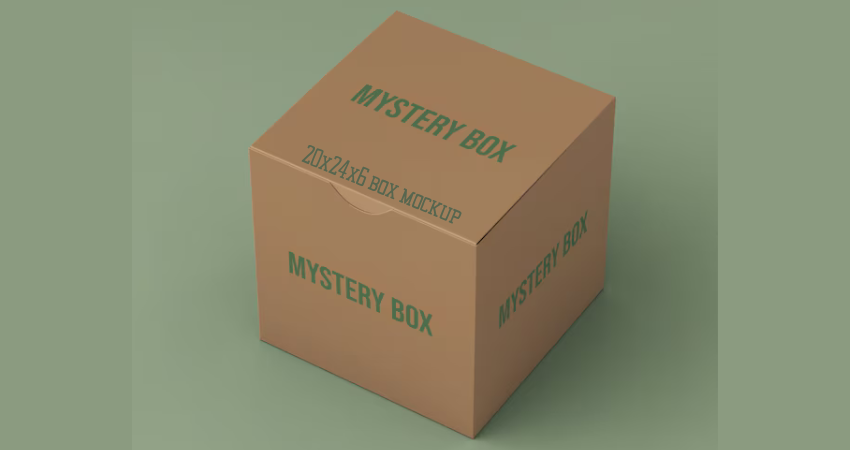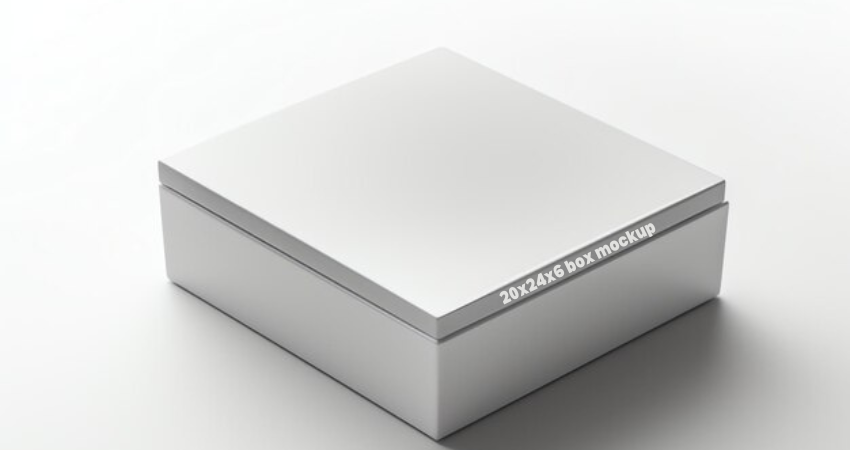Throughout history, the most unassuming objects have been the silent architects of creativity, progress, and imagination. Among them, the humble 20x24x6 box mockup—a symbol of geometry, balance, and possibility—holds a story that is at once poetic and deeply rooted in the evolution of art, design, and practicality. Let us embark on an emotional journey through time, tracing the origins, significance, and transformation of this iconic shape. This is not merely a history; it is a love letter to form and function.
The Genesis of the Box: A World Before Mockups
Before the 20x24x6 box mockup graced the hands of designers and visionaries, there was the box itself: a container, a boundary, and a vessel for dreams. Boxes have existed in human culture for millennia, dating back to ancient civilizations. From wooden crates that carried precious spices along the Silk Road to intricately designed jewelry cases buried in the tombs of Egyptian pharaohs, the box has always been more than a structure. It has been a safeguard for treasures, a holder of memories, and a promise of possibilities yet to unfold.
But the leap from utility to artistry—the moment when the box became not just a container but a canvas—was a shift born of necessity. As industries blossomed and commerce began to globalize in the 18th and 19th centuries, packaging design emerged as an art form. Manufacturers recognized that the box could serve as a storyteller, a vessel for both the product within and the emotions of the consumer.
The Era of Dimensions: The 20x24x6 Box is Born
Amid this burgeoning revolution, the industrial age demanded precision. Standardized dimensions became paramount in an era where goods were transported across continents and oceans. Enter the 20x24x6 box—a size that seemed to embody balance and versatility.
But why this particular size? It wasn’t random. The 20-inch width, 24-inch height, and 6-inch depth created proportions that were aesthetically pleasing while being practical for a wide range of uses. This box was large enough to house posters, books, or art prints yet shallow enough to avoid wasted space. It could fit snugly into storage spaces and was easy to handle.
By the late 19th century, this box size became a quiet staple for industries that prioritized presentation—printing houses, advertising agencies, and even boutique art galleries. The 20x24x6 dimensions began to signify more than their measurements; they became synonymous with a sense of completeness.

The Dawn of Mockups: A Medium for the Modern Visionary
As the 20th century unfurled its tapestry of technological marvels and artistic expression, a need emerged for prototypes—tools that could bring ideas to life before they became reality. Designers, marketers, and engineers began crafting mockups as a way to test concepts, refine aesthetics, and communicate ideas.
The 20x24x6 box mockup rose as a hero in this narrative. Its dimensions lent themselves perfectly to visualization. Whether representing packaging for a luxury product, a shipping solution, or an artistic portfolio, this mockup became a bridge between imagination and execution.
Mockups were no longer confined to sketches on paper. They were tactile, three-dimensional, and brimming with potential. The 20x24x6 box mockup, with its adaptable size, allowed designers to experiment, play, and innovate. It became a vessel not just for products but for dreams.
The Golden Age of Advertising and the Box’s Role
The mid-20th century ushered in an era of bold advertising. Post-war economies were booming, and consumer culture was flourishing. Packaging became a silent salesman, drawing customers in with its allure. The 20x24x6 box mockup became an indispensable tool in this landscape.
Advertising agencies embraced the mockup as a way to pitch their ideas. Before a product even hit the shelves, its packaging could be visualized, scrutinized, and perfected. These mockups weren’t just tools of practicality—they became part of the creative process itself. Designers would sketch bold logos, experiment with typography, and test vibrant color palettes on the surface of these boxes.
The 20x24x6 mockup was not just a means to an end; it was a collaborator in the creative journey.
The Digital Revolution: A New Chapter for Mockups
With the rise of the digital age in the late 20th and early 21st centuries, the 20x24x6 box mockup underwent a transformation. Software tools like Adobe Photoshop and Illustrator allowed designers to create hyper-realistic digital mockups. The once-physical prototype became a virtual masterpiece, unbound by the constraints of the physical world.
However, even in this era of pixels and screens, the 20x24x6 dimensions held their ground. Digital designers revered these proportions for their adaptability. The mockup became a staple in portfolios, presentations, and e-commerce. It bridged the gap between the tactile and the virtual, reminding creators of the beauty in simplicity.
Symbolism and Philosophy: The Box as a Metaphor
Beyond its practical applications, the 20x24x6 box mockup carries profound symbolism. A box, after all, is a boundary. It defines space, creates structure, and holds the unknown. But within its walls lies infinite potential.
The 20x24x6 dimensions represent balance—a harmony of width, height, and depth. It reminds us of the delicate interplay between what is seen and what is hidden, what is tangible and what is imagined. It is both a limitation and an invitation, urging us to think inside and outside its boundaries.
Modern Applications: A Timeless Tool
Today, the 20x24x6 box mockup remains as relevant as ever. From product packaging to art portfolios, it continues to serve industries across the globe. Designers use it to pitch ideas, test layouts, and refine their visions. It has become a universal language, understood by creatives from Tokyo to New York.
Moreover, the rise of sustainable design has breathed new life into the 20x24x6 box mockup. Designers are reimagining its materials, exploring eco-friendly options, and finding innovative ways to minimize waste. This mockup is not just a tool for the present—it is a symbol of progress, adapting to the challenges of a changing world.

A Tribute to the Unseen Hero
The history of the 20x24x6 box mockup is a story of quiet resilience. It is not a tale of grand inventions or monumental breakthroughs. Instead, it is a story of steady evolution, of an object that has adapted, endured, and thrived.
In its unassuming form, the 20x24x6 box mockup carries the weight of countless dreams, ideas, and creations. It has been a silent witness to the birth of art, the evolution of design, and the relentless pursuit of innovation.
And so, this humble box reminds us that even the simplest forms can hold profound significance. It is a testament to the power of creativity, a vessel for imagination, and a symbol of infinite possibilities.
FAQs: The 20x24x6 Box Mockup
1. What are the origins of the 20x24x6 box mockup?
The 20x24x6 box mockup emerged as a practical tool during the industrial revolution, evolving into a creative asset for designers, advertisers, and manufacturers.
2. Why are the dimensions 20x24x6 significant?
The proportions balance functionality and aesthetics, making it ideal for various uses, including packaging, art portfolios, and shipping solutions.
3. How did the digital age impact the 20x24x6 box mockup?
The rise of digital tools transformed the mockup into a virtual asset, allowing designers to create hyper-realistic prototypes without physical materials.
4. What industries use the 20x24x6 box mockup?
This mockup is widely used in packaging design, advertising, e-commerce, and art presentation.
5. How has sustainability influenced the design of box mockups?
Modern designers are exploring eco-friendly materials and sustainable practices to reduce waste and improve the environmental impact of packaging.
6. What makes the 20x24x6 box mockup timeless?
Its versatility, adaptability, and ability to bridge practicality with creativity make it a timeless tool for creators across disciplines.


